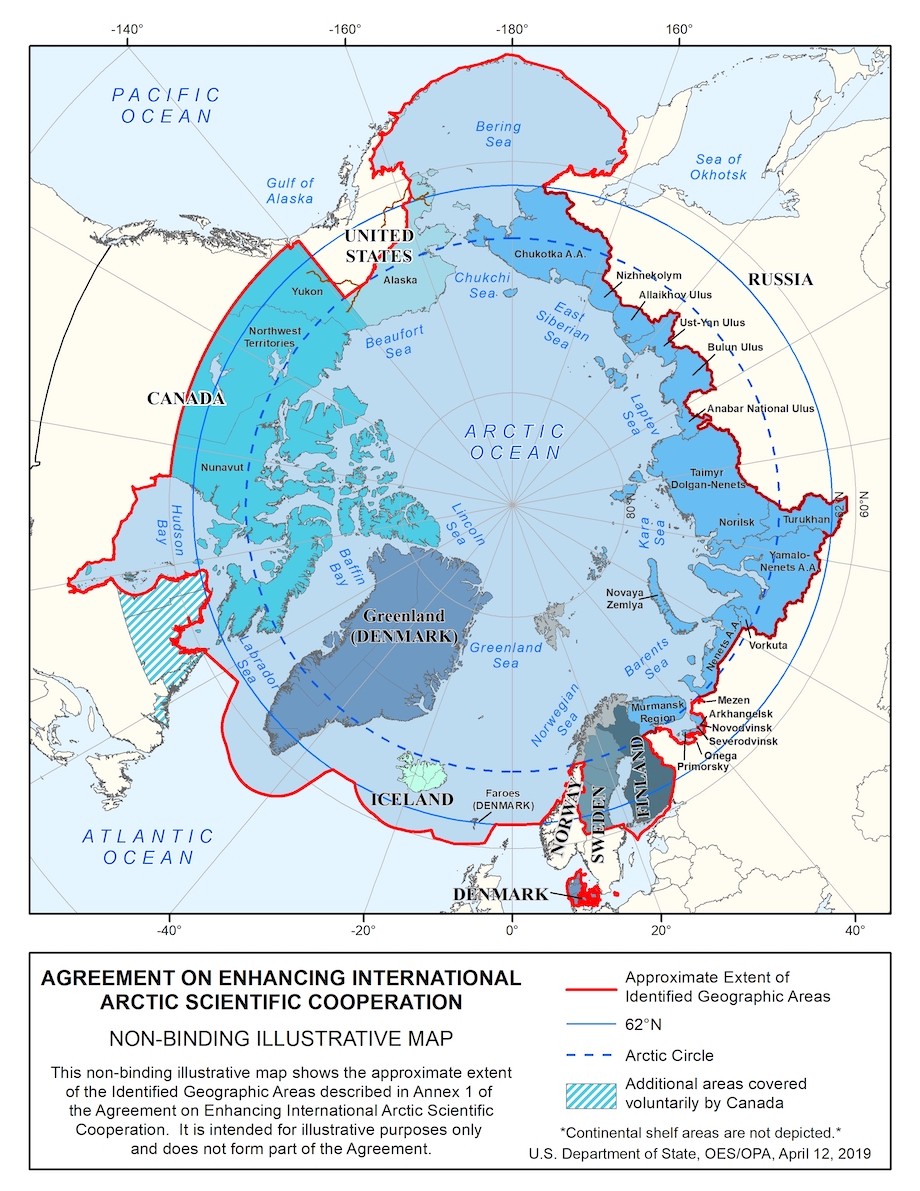The eight Arctic governments signed the Agreement on Enhancing International Arctic Scientific Cooperation (sometimes colloquially referred to as the Arctic Science Agreement) on May 11, 2017 in Fairbanks, Alaska; the Agreement entered into force on May 23, 2018.
The Agreement facilitates access by scientists of the eight Arctic governments to Arctic areas that each government has identified, including entry and exit of persons, equipment, and materials; access to research infrastructure and facilities; and access to data.
The Agreement also calls for the parties to promote education, career development and training opportunities, and encourages activities associated with traditional and local knowledge.
The Agreement applies to these areas, as described in Annex 1 of the Agreement:

- This and more information on the Agreement is provided by the US Arctic Research Commission.
- The text of the Agreement is available via the Arctic Council. Note that while the Agreement is legally binding for the Arctic signatory states, Article 17 also includes cooperation with non-Parties.
- A press release about the Agreement coming into force is available via the Arctic Council.
- A "Report on Understanding the Bottlenecks in Cross-Border Research" is now available via the University of the Arctic, in cooperation with IASC and IASSA.
- Ditte Nissen Lund of the Danish Agency for Science and Higher Education gave a talk about the Agreement at ASSW2020 - YouTube or Slides
A protocol for communication with the points of contacts is being developed. It is indended for you to work with your own national point of contact, who will in turn raise any issues with their international colleagues.

